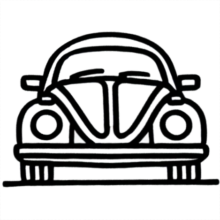The Importance of Maintaining Correct Tyre Pressure for Your VW Beetle
Proper tyre pressure is crucial for ensuring optimal performance, handling, and safety of your VW Beetle. Incorrect tyre pressure can lead to decreased fuel efficiency, poor traction, uneven tyre wear, and even the risk of a blowout.
How to Check and Adjust Tyre Pressure
1. Use a reliable tyre pressure gauge to check the pressure when the tyres are cold.
2. Locate the recommended tyre pressure values on the driver’s side door jamb or in the owner’s manual.
3. Unscrew the valve cap and press the gauge onto the valve stem to get a pressure reading.
4. Add or release air as needed to meet the recommended pressure.
Recommended Tyre Pressure Values for VW Beetles
For most VW Beetles, the recommended tyre pressure is around 32-35 PSI for the front tyres and 30-33 PSI for the rear tyres. However, always refer to the specific recommendations for your Beetle model.
Impact of Incorrect Tyre Pressure
Low tyre pressure can result in increased fuel consumption, reduced handling, and premature wear on the outer edges of the tyres. On the other hand, overinflated tyres can lead to a harsh ride, reduced traction, and uneven wear in the center of the tread.
Tips for Maintaining Optimal Tyre Pressure
- Check tyre pressure at least once a month and before long trips.
- Ensure the tyres are cold before checking or adjusting pressure.
- Use a quality tyre pressure gauge for accurate readings.
- Avoid overinflating or underinflating tyres.
Specific Considerations for VW Beetle Owners
Beetle owners should pay attention to the tyre pressure recommendations specific to their model year and trim level. Additionally, consider factors like driving conditions, load capacity, and seasonal changes when adjusting tyre pressure.
By following these guidelines and maintaining the correct tyre pressure for your VW Beetle, you can enhance your driving experience, improve fuel efficiency, and ensure the safety of you and your passengers.
